












1. Alamo Heights Farmers Market
alamoheightsfm.com
210-367-4673
255 E Basse Rd Suite 130 San Antonio, TX 78209
2. Alamo Ranch Farmers Market
http://alamoranchfarm.market
210-446-0099
3. Bandera Market
https://www.banderamarket.com
740-563-2274
11625 Bandera Rd San Antonio, TX 78250
4. Bulverde Market
http://www.bulverdemarket.com
830-438-3111
30280 Cougar Bend
Bulverde, TX 78163
5. Cibolo Grange Farmers & Artisans Market
https://www.facebook.com/ CiboloGrangeFarmersMarket/ 210-249-6822
6. Deerfield Farmers Market facebook.com/deerfieldfarmers market.satx
16607 Huebner Rd. San Antonio, TX 78248
7. Encino Farmers Markets www.fourseasonsmarkets.com 972-884-0680
22902 U.S. Hwy N San Antonio, TX 78259
8. The Farm Connection www.thefarmconnection.org
210-674-2642
1595 S Main St Suite 120 Boerne, TX 78006
9. Farmers Market at Herff Farm http://www.cibolo.org/ 830-249-4616
33 Herff Rd Boerne, TX 78006
10. Garden Ridge Market http://gardenridgemarketdays. com
602-920-9301
19185 FM-2252
Garden Ridge, TX 78226
11. Helotes Area Farmers Market
210-420-4802
13222 Bandera Rd. Helotes, TX 78203
12. Huebner Oaks Farmers Market
www.fourseasonsmarkets.com
210-420-0488
413 N Main St. Cibolo, TX 78108
13. Legacy Farmers Market legacyfarmersmarket.com
210-420-0488
16103 Henderson Pass San Antonio, TX 78232
14. Live Oak Farmers Market www.facebook.com/liveoakfarm ersmarketonpatbooker (210) 473-0685
8151 Pat Booker Rd Live Oak, TX 78233
15. Local Sprout www.localsprout.com
603-759-9781
503 Chestnut St San Antonio, TX 78202
The most comprehensive list of local farms, markets, products, and services in all of San Antonio
16. New Braunfels Farmers Market
www.nbfarmersmarket.com
830-629-2223
186 S Castell Ave New Braunfels, TX 78130
17. Pearl Farmers Market atpearl.com/weekend-market
210-212-7260
312 Pearl Pkwy
San Antonio, TX 78215
18. San Antonio Farmers Market Association (multiple locations) sanantoniofarmersmarket.org
210-204-7939
100 Jackson Keller Rd San Antonio, TX 78216
19. San Antonio Food Bank (multiple locations) https://safoodbank.org/our-pro grams/ farmers-market-nutrition-pro gram/
(210) 431-8342
5200 Enrique M. Barrera Pkwy San Antonio, TX 78227
20. Spring Branch Market themarketatspringbranch.com
830-709-7262
1. Behind the Oaks Farms facebook.com/behindtheoaks farms
210-793-1027
Greaves Ln Schertz, TX 78154
2. Braune Farms www.braunefarmsfreshproduce. com
830-643-9974
1300 Link Rd Seguin, TX 78155
3. Brehm Farms Brehmfarms.com
210-771-3147
8990 Hildebrandt Rd San Antonio, TX 78222
4. Garcia Street Urban Farm www.instagram.com/garcias
treetfarm
218 Garcia St San Antonio, TX 78203
5. Granieri Family Farm
210-333-5184
3851 Roland Rd San Antonio, TX 78222
6. Green Bexar Farm http://www.greenbexarfarm.com
512-216-0033
14997 FM 1346
Saint Hedwig, TX 78152
7. The Greenies Urban Farm https://agrilifetoday.tamu. edu/2020
/10/16/greenies-urban-farmto-demon
strate-agriculture-in-the-city
1543 Sherman
San Antonio, TX 78202
8. The Green Microstead http://www.thegreenmicrostead. com
210-501-2185
9. Miller Farms
millerfarmsrawmilk.com
210-508-1733
12730 FM 471
Lacoste, TX 78039
10. Miss Scarlett’s Texas Homegrown
facebook.com/MissScarlettsTex asHome
Grown 30315 Bartels Rd
Bulverde TX 78163
11. MT Rabbitry & Poultry Farm sanantoniorabbitsandchickens. com
210-827-4686
1610 Co Rd 5714
Natalia, TX 78059
12. Parker Creek Farms parkercreekranch.com
2956 FM 2200
D’Hanis, TX 78850
13. Peeler Farms
Peelerfarms.com
210-551-5828
3007 FM 539
Flooresville, TX 78114
14. R Farm rfarmchicksandmore.wordpress. com
210-800-4695
1041 Farm-to-Market 2537 San Antonio, TX 78221
15. Rising Kale Farms
www.risingkalefarms.com
210-843-1962
2230 Well Rd
Marion, TX 78124
16. Talking Tree Farm
http://talkingtreefarm.com
210-923-9044
6250 Pfeil Rd
Schertz, TX 78154
PLANT NURSERIES
1. Accent Plant Interior
210-648-1303
2. Evergreen Garden Center
www.evergreengardentx.com
210-735-0669
922 W. Hildebrand Ave San Antonio, TX 78222
3. Fanick’s Nursery www.fanicknursery.com
210-648-1303
4. The Garden Center thegardencenter.com
210-648-1303
1025 Holmgreen Rd San Antonio, TX 78201
5. Green Gate Nursery
830-372-4060
990 S N Hwy 123 Bypass Seguin, TX 78155
6. Milberger’s Nursery
www.milbergernursery.com
210-497-3760
3920 N Loop 1604 E San Antonio, TX 78247
7. Nature’s Herb Farm naturesherbfarms.com
210-688-9241
7193 Old Talley Rd #7 San Antonio, TX 78253
8. Para Para Plants
210-809-2487
232 Kathy Dr San Antonio, TX 78223
9. Peterson Brothers Nursery
210-333-6971
1630 Creekview Dr San Antonio, TX 78219
10. Rainbow Gardens rainbowgardens.biz
210-680-2394
8516 Bandera Rd San Antonio, TX 78250
11. SANO Nursery facebook.com/SANOnursery
210-432-4265
285 W Quill Dr San Antonio, TX 78228
12. Shades of Green www.shadesofgreen.com
210-824-3772
334 W Sunset Rd San Antonio, TX 78209
BULK MATERIALS
1. Adam’s Supply Co www.adamssupplyinc.com
210-822-3141
1434 E Bitters Rd San Antonio, TX 78216
2. Adkins Materials adkinsmaterials.com
210-649-3836
10966 US Hwy 87 E Adkins, TX 78101
3. Barrels for Sale barrelsforsale.net
559-997-3682
2610 S East Loop 410 San Antonio, TX 78222
4. Bitters Recycling Center (Mulch & Compost)
Website
(210) 207-6428
1800 Wurzbach Pkwy, San Antonio, TX _____
5. Buckhorn Soil & Stone buckhornsoilandstone.net
210-695-1911
10685 W Loop 1604 N San Antonio, TX 78254
6. Dabco Stone & Soil dabcomaterials.com
210-426-6160
12625 S Zarzamora St San Antonio, TX 78224
7. Ewing Irrigation (multiple locations)
www.ewingirrigation.com
210-828-9530
1041 N Interstate 35 San Antonio, TX 78233
8. Gardenville (multiple locations)
www.garden-ville.com
210-404-1187
11601 Starcrest Dr San Antonio, 78247
9. Gretchen’s Bee Ranch
gretchenbeeranch.com
830-305-7925
2745 W Kingsbury St Seguin, TX 78155
10. Keller Material kellermaterial.com
210-967-1300
9388 Corporate Dr Selma, TX 78154
11. Landscape Solutions and Nursery
soil4sale.com
830-985-3747
3059 US-90
Castroville TX 78009
12. New Earth
www.newearthcompost.com
210-661-5180
7800 I-10 East
San Antonio, TX 78219
13. Quality Organic Products www.qualityorganicproducts.com
210-651-0200
15497 Lookout Rd
Selma, TX 78154
14. Tank Depot www.tank-depot.com
210-648-3866
2702 S East Loop 410
San Antonio, TX 78222
15. Texas Soil and Stone texassoilandstone.com
210-497-1777
26950 Bulverde Rd
San Antonio, TX 78260
EDIBLE LANDSCAPERS
1. Compost Queens https://www.compostqueenstx. com
210-640-9468
2. Two Hoes Gardening twohoesgardening.com
210-414-8660
3. The Landscape Cooperative www.LandscapeCooperative.com
210-988-8290
4. Uprooted Gardens uprootedgardens.com
210-842-5613
EDUCATION & ADVOCACY
1. Bexar County Master Gardeners /Agrilife Extension
bexar-tx.tamu/edu
210-631-0400
3355 Cherry Ridge #212 San Antonio, TX 78230
2. Central Texas Mycological Society
centraltexasmycology.com info@centraltexasmycology.org
Circle Acres Nature Preserve Grove Blvd
Austin, TX 78741
3. Central Texas Young Farmers Coalition
centraltexasyoungfarmers.org info@centraltexasyoungfarmers. org
4. Cibolo Creek Nature Center & Farm Cibolo.org
830-249-4616
140 City Park Rd Boerne, TX 78006
5. Eco Centro ecocentrosatx.org
210-486-0417
1802 N Main Ave
San Antonio TX 78212
6. Festival of Flowers safestivalofflowers.com
210-380-3532
1330 N. New Braunfels
San Antonio, TX 78209
7. Food Policy Council foodpolicysa.org
210-365-7175
18202 Main Ave
San Antonio, TX 78212
8. Garden Volunteers of South Texas gardeningvolunteers.org
210-251-8101
1254 Austin Hwy San Antonio, TX 78209
9. Gardopia Gardens gardopiagardens.org
210-478-7292
619 N. New Braunfels San Antonio, TX 78202
10. Green Space Alliance greensatx.org
210-222-8430
108 E Mistletoe Ave San Antonio, TX 78212
11. National Center for Appro priate Technology ncat.org
210-265-3905
118 Broadway San Antonio, TX 78230
12. Native Plant Society of Texas npsot.org/wp/sanantonio npsot.sanantonio@gmail.com
2809 Broadway
San Antonio, TX 78209
13. Palo Alto College alamo.edu/pac
210-486-3000
1400 W. Villaret Blvd. San Antonio, TX
14. San Antonio Botanical Gardens
sabot.org
210-536-1400
555 Funston Pl
San Antonio, TX 78209
15. San Antonio Herb Market Association sanantonioherbmarket.com
866-923-2226
16. San Antonio Seed Exchange Library
facebook.com/groups/sananto niosee dexchange
17. San Antonio Stockshow and Rodeo sarodeo.com
210-225-5851
723 AT&T Parkway
San Antonio, TX 78219
18. San Antonio Water System gardenstylesanantonio.com
210-704-7297
2800 US-281
San Antonio, TX 78212
19. Sowing Strength sowingstrengthsatx.wixsite.com/ sowing
Strength-satx
318-426-6109
20. Texas Nursery and Landscape Association tnlaonline.org grow@uprootedgardens.com
21. Yanwana Herbolarios Yanawanaherbolarios.org
210-872-8005
1. Alamo Feed
210-733-8211
2230 Blanco Rd San Antonio, TX 78212
2. Bulverde Feed bulverdefeed.com
830-438-3252
29110 US-281
Bulverde TX 78163
3. David’s Garden Seeds davids-garden-seeds-and-prod ucts. com davidsgardenseeds@outlook. com
5029 FM 2054 Poteet, TX 78065
4. Locke Hill Feed lockehill.com
210-691-2351
4927 Golden Quail Ste 105 San Antonio, TX 78240
5. King Seed Co dkseeds.com
210-661-4191
4627 Emil St San Antonio, TX 78219
6. Mini Ranch Feed miniranchfeedstore.com
210-628-1535
10103 Moursund Blvd
San Antonio TX 78221
7. Moore’s Feed mooresfeedandseedstore.com
210-532-6328
3721 Flores St
San Antonio, TX 78214
8. New Braunfels Feed nbfeed.com
830-625-7250
810 TX-337 Loop New Braunfels, TX 78130
9. Ramirez Feed ramirez-feed-store.edan.io
210-977-8993
3819 Nogalitos St San Antonio, TX 78211
10. Rudy’s Feed rudysfeedstore.com
210-223-2832
1801 Nogalitos St San Antonio, TX 78225
11. St. Hedwig Feed sthedwigfeed.com
210-667-1346
540 E FM 1518 S St Hedwig, TX 78152
12. Strutty’s Feed struttys.com
830-981-2258
28630 IH 10 Frontage Rd Boerne, TX 78006
13. Wildseed Farms wildseedfarms.com
830-990-1393
100 Legacy Dr
Fredericksburg, TX 78264
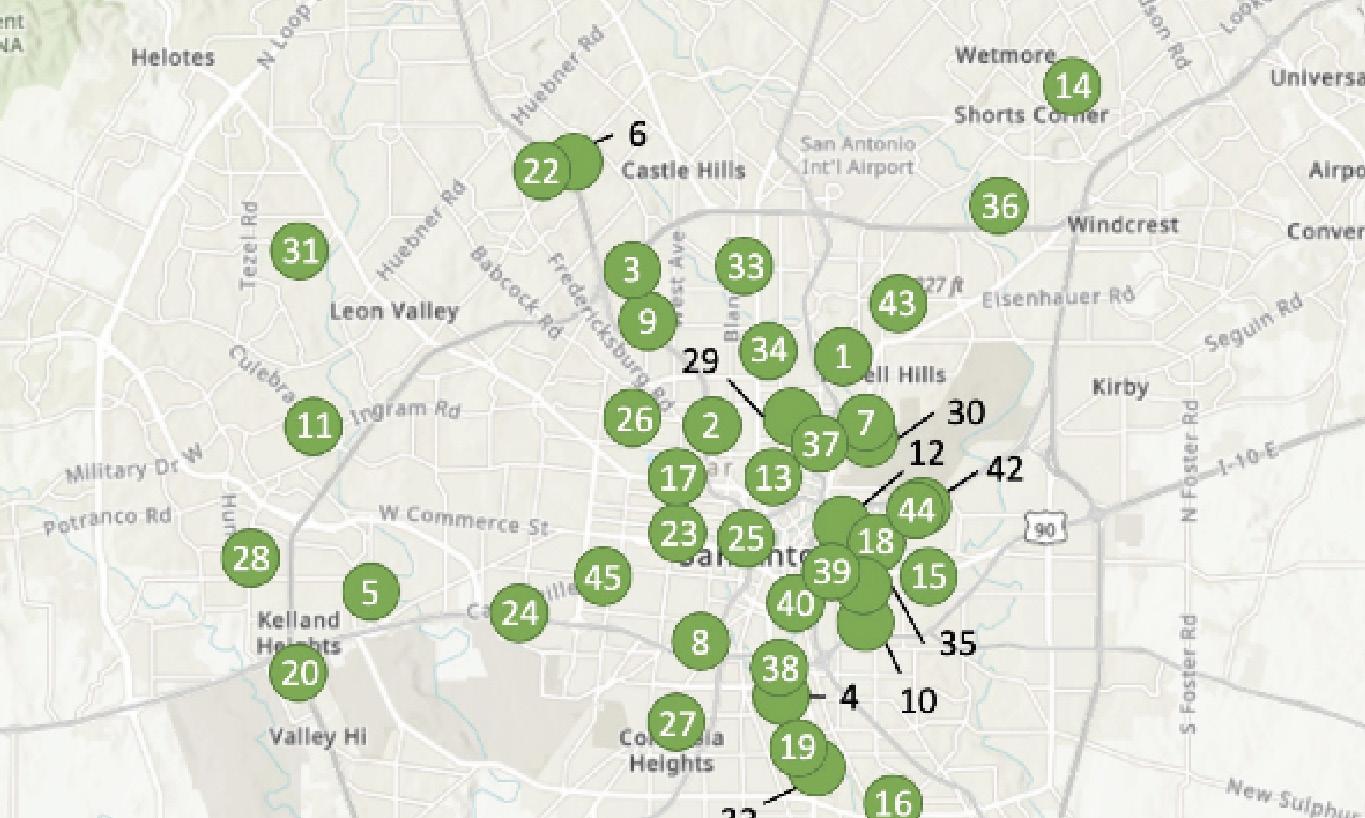
21. High Country Community Garden
16418 Cypress Park St. San Antonio, TX 78247
22. International Community Garden
4242 Bluemel Rd. San Antonio, TX 78240
23. Jardín de la Esperanza
2806 W. Salinas, San Antonio TX 78207
24. Jardín del Barrio
2121 SW 36th St. San Antonio, TX 78237
25. Jardín del Sol
400 N. Frio St. San Antonio, TX 78207
26. Jefferson Community Garden
2350 W. Gramercy Pl. San Antonio, TX 78201
27. Labor Serena Community Garden
1246 Chalmers Ave. San Antonio, TX 78211
28. Lakeview Community Garden
1202 Plaza Lake Dr. San Antonio, TX 78245
29. Landa Library Gardens
233 Bushnell Ave. San Antonio, TX 78212
30. Mahncke Park Community Garden
330 Funston Pl. San Antonio, TX 78209
31. Mainland Square Commu nity Garden
Mainland Sq. & Pavilion Pl. San Antonio, TX 78250
32. Mission Library Community Garden
3134 Roosevelt Ave. San Antonio, TX 78214
33. Oblate School of Theology Gardens
285 Oblate Dr. San Antonio, TX 78216
34. Olmos Park Terrace Community
Garden 201 W. Mandalay Dr. San Antonio, TX 78212
35. Pittman-Sullivan Community Garden
Dakota St. & S. Palmetto Ave. San Antonio, TX 78208
36. Reconciliation Oaks Community
Garden8900 Starcrest Dr. San Antonio, TX 78217
37. River Road Community Garden
E. Huisache Ave. & Allison Rd. San Antonio, TX 78212
38. Roosevelt Justice Community Garden
Mitchell St. & Mission Rd. San Antonio, TX 78210
39. Roots of Change Community Garden
1416 E. Commerce St. San Antonio, TX 78205
40. Southtown Community Garden
1012 S. Presa St. San Antonio, TX 78210
41. Spicewood Elementary Community Garden

11303 Tilson Dr. San Antonio, TX 78224
42. Sutton Oaks Community Garden
2818 I-35 N. San Antonio, TX 78208
43. Terrell Heights Community Garden
670 Greenwich Blvd. San Antonio, TX 78209
45. YWCA Olga Madrid Teen Garden
503 Castroville Rd. San Antonio, TX 78237


 By Kendalle Wexler, MA, LMFT
By Kendalle Wexler, MA, LMFT
Gardening is often thought of as a leisurely pastime or a way to beautify outdoor spaces, but it also has significant benefits for mental health. Spending time in nature, participating in physical activity, and engaging in the creative process of planting and caring for plants can all contribute to a greater sense of well-being.

One of the most significant mental health benefits of gardening is its ability to reduce stress and anxiety.
A study by Van Den Berg and
Custers (2011) found that “Gardening can promote the restoration of the neuroendocrine and affective responses that are involved in the stress process, and thereby have a beneficial effect on mental health.”
Gardening allows individuals to spend time outdoors in a peaceful environment, which can help to lower cortisol levels, reduce feelings of tension, and promote a sense of relaxation.
In addition to reducing stress,

gardening can also alleviate symptoms of depression. A study by Gonzalez et al. (2010) found that “Therapeutic horticulture can help to reduce symptoms of depression in patients by providing a sense of purpose and achievement.” Gardening can be a creative outlet, allowing individuals to express themselves and find satisfaction in seeing their efforts produce tangible results. Additionally, caring for plants and watching them grow can be a source of hope and positivity, which can help individuals to manage symptoms of depression.
Gardening can also promote social connection, which is important for overall well-being. Joining a gardening
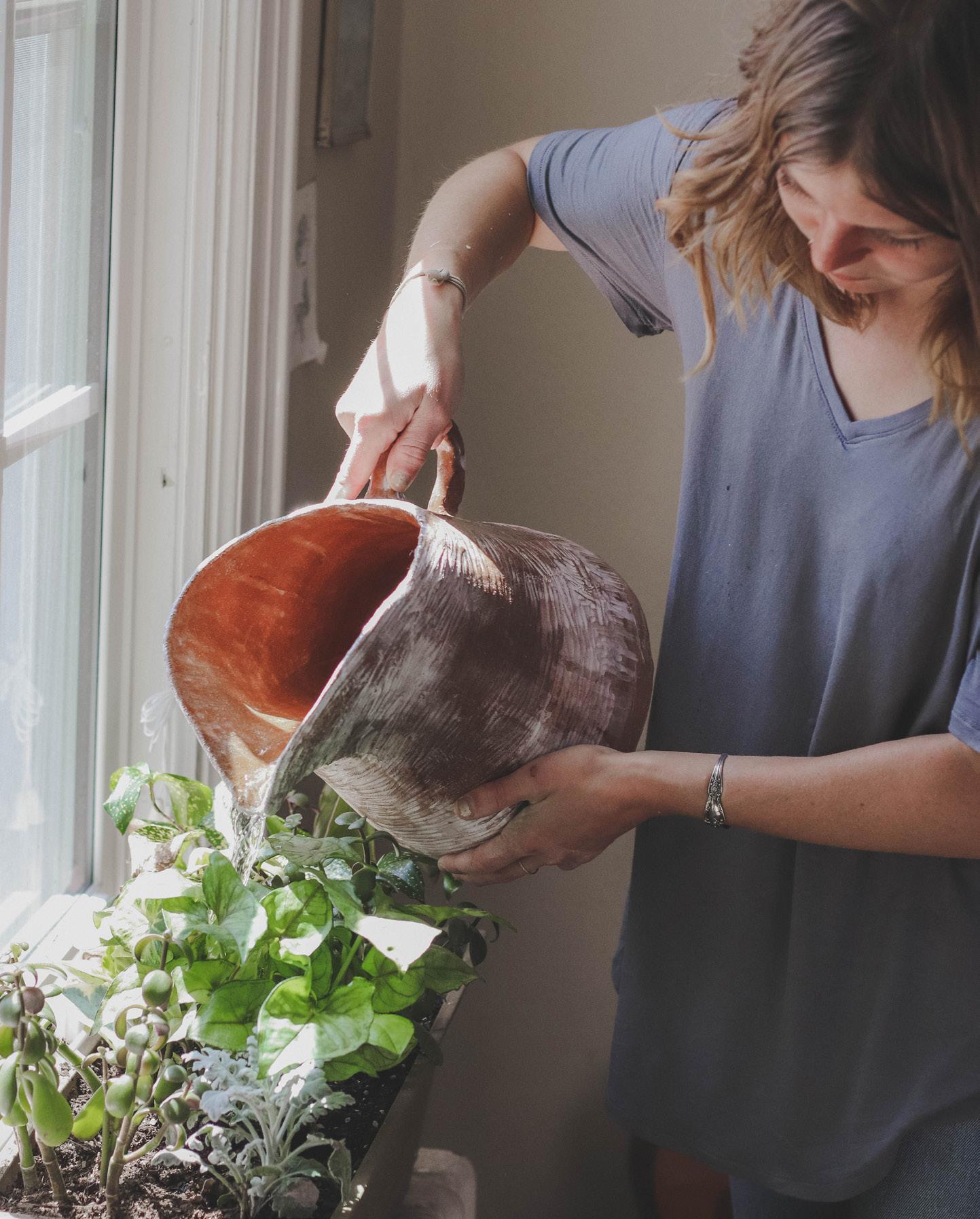
club or participating in a community garden can provide opportunities to meet new people, form relationships, and work together toward a common goal. As Tse and Lo (2016) note, “Participating in gardening programs can increase social engagement and reduce social isolation, which can be beneficial for individuals with mental health issues.” Gardening can provide a sense of belonging and a supportive community, which can help individuals to feel less alone and more connected to others.
Finally, gardening can improve physical health, which can have a positive impact on mental health. Regular physical activity has been shown to improve mood, reduce anxiety and depression, and boost self-esteem. As Soga et al. (2017) note, “Gardening is a form of physical activity that can have significant health benefits, including reducing the risk of obesity, hypertension, and cardiovascular disease.” Gardening can also provide a source of fresh, healthy produce, which can improve nutrition and overall physical health. In closing, gardening is a simple but powerful way to improve mental health. Spending time in nature, engaging in physical activity, and connecting with others can all contribute to a greater sense of well-being. As the scholarly quotes cited in this article illustrate, gardening has been shown to reduce stress, alleviate symptoms of depression, promote social connection, and improve physical health. Whether you have a large garden or a small balcony, gardening can be a fulfilling and therapeutic activity for anyone looking to improve their mental health.
Started in October 2017 by an inspiration from God to Papa Prevo, our master gardener, to teach people how to grow their own food. Papa Prevo started gardening here in San Antonio in 1971, and he continues to teach new gardeners his invaluable knowledge and skills on using the right soil, water and sun that allows seeds to produce a healthy harvest. The main purpose of the garden is to teach others how to grow their own vegetables without harmful pesticides and chemicals, while utilizing recyclable materials. As Papa Prevo would say: “Your Health is Your Wealth!” and “Those who control the food control you.

https://www.instagram.com/heavenly_gardens1/
San Antonio’s only all-girls, tuition-free, public elementary school. Building upon the success of the Young Women’s Leadership Academy (YWLA), YWLA Primary offers elementary-aged girls a school with focuses on STEAM (science, technology, engineering, the arts, and math), social-emotional learning, leadership, and early college preparation. Aside from targeted academic focuses, YWLA Primary also provides girls a single-gender environment in which they can harness their self-confidence and learn to use their voices with purpose.
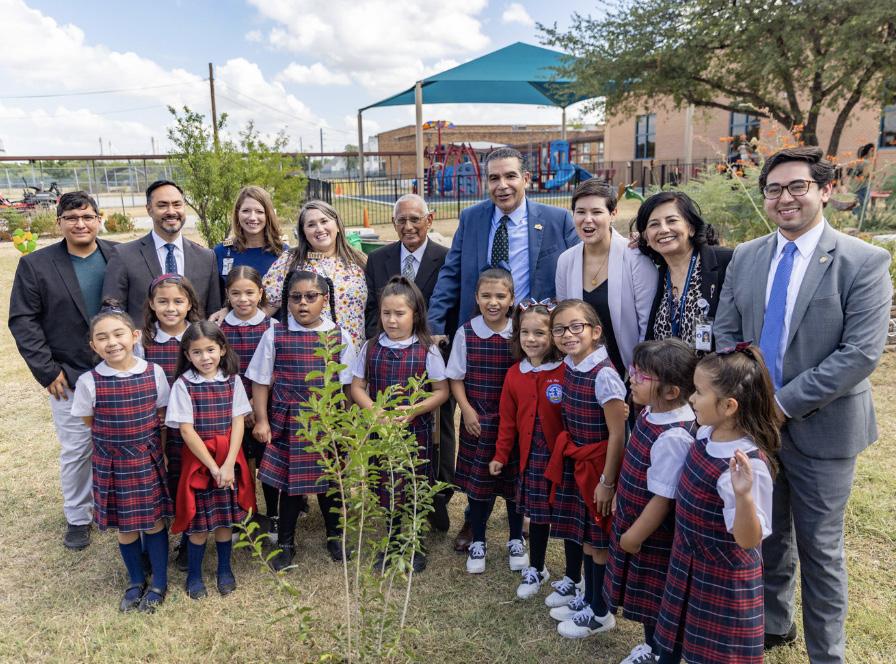
https://schools.saisd.net/page/120.homepage

It’s truly a feast for the senses, and they’re pretty sure it’ll become your non-negotiable weekend habit. Pearl Farmers Market is an open-air grocery store, held rain or shine. To promote sustainability and the local food movement, all vendors are located within a 150 mile radius of San Antonio, TX. Support local business and find true South Texas style and flavor. Pearl Farmers Market was recently named one of the Top 10 Farmers Market in the nation by USA Today and voted San Antonio’s Magazine’s Best Farmers Market 2022.
https://atpearl.com/weekend-market/
https://sanantonioreport.org/urban-gardeners-competi


Serving the gardeners of South Texas with two garden centers in San Antonio since 1976. Through the years, they’ve developed these park-like sites into garden centers that offer more choices for the home gardener than any other garden center in the region. Their professional staff has decades of experience, helping novice and master gardeners alike. They offer a diverse selection of plants and products that will make your garden experience complete. Stroll down the paved and crushed granite paths under the shade of century old live oaks and soak in the garden experience. Display gardens, educational signs, expert-led classes and events, along with helpful advice from state-certified nursery professionals all contribute to your gardening success.
“an X-ray technologist at The Children’s Hospital of San Antonio and a busy dad who spends his evenings chasing his three active young sons. He spends what little free time he has growing food for his family in just about every square inch of his small backyard in the Dignowity Hill neighborhood. His love of gardening got started in 2013, and in less than a decade Batsche has gone from experimenting with a few fruit trees to having four chickens, 14 fruit trees and three 4-by-8-foot raised garden beds that produce hundreds of pounds of fresh produce for his family’s table every year.” -Jennifer
Norrishttps://sariverfound.org/confluence-park/
http://www.rainbowgardens.biz/
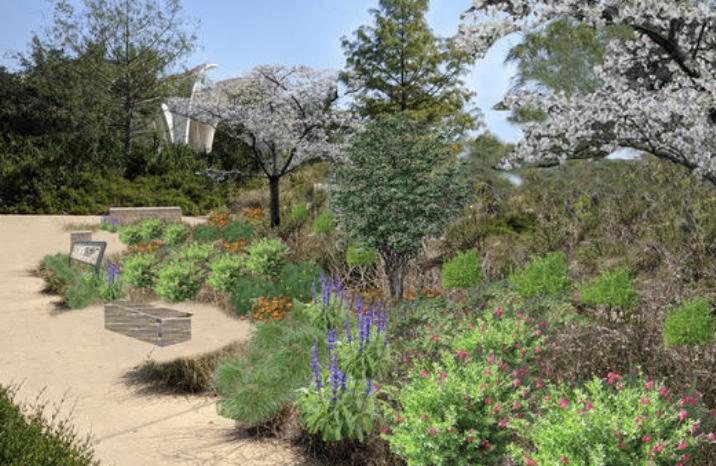
With environmental education as its core purpose, Confluence Park is envisioned as an interactive teaching tool that will inspire a greater understanding of Texas ecotypes and watershed dynamics. The park’s master plan by Ball-Nogues Studio, and Rialto Studio includes five landscape ecotypes found regionally. This native planting is suited for San Antonio’s climate, requiring less water and care as well as attracting fundamental pollinators like Monarch butterflies.
https://safoodbank.org/ways-to-help/give-time/
Twins with a heart for serving the community and gardening! Starting at the beginning of 2022 they showed up to Gardopia with their dad ready to do work! Since that time they rarely miss a weekend, always happy to lend a helping hand. Both of them have combined for 100+ hours volunteering in the garden in a relatively short period of time. Volunteers like Alex & Jose are what keep the micro-farm on N. New Braunfels looking so amazing year-round!
Behind the warehouse facility is the 40+ acre urban farm that grows produce year-round and features a variety of crops that grow well in South Central Texas. Produce grown on this farm is distributed throughout our 29-county region and to the community through the San Antonio Food Bank’s Farmers Markets and Mobile Mercado.
Volunteer opportunities range from the sorting room, warehouse, garden and farm areas, community kitchen, and even an off-site community kitchen at Haven for Hope. Whether you’re an individual, group, or company there are many opportunities to volunteer.


The San Antonio Botanical Garden was first imagined nearly eight decades ago by civic influencers Mrs. R. R. Witt and Mrs. Joseph Murphy. Forty years of planning and partnerships finally blossomed on May 3, 1980, with the official opening of the Botanical Garden.

Since that day, the formal gardens and collections of native Texas plants have evolved to make the Botanical Garden one of the most noteworthy botanical centers in the state, educating and inspiring guests from around the world.
https://www.sabot.org/ www.gardopiagardens.org/gardenawardsgala


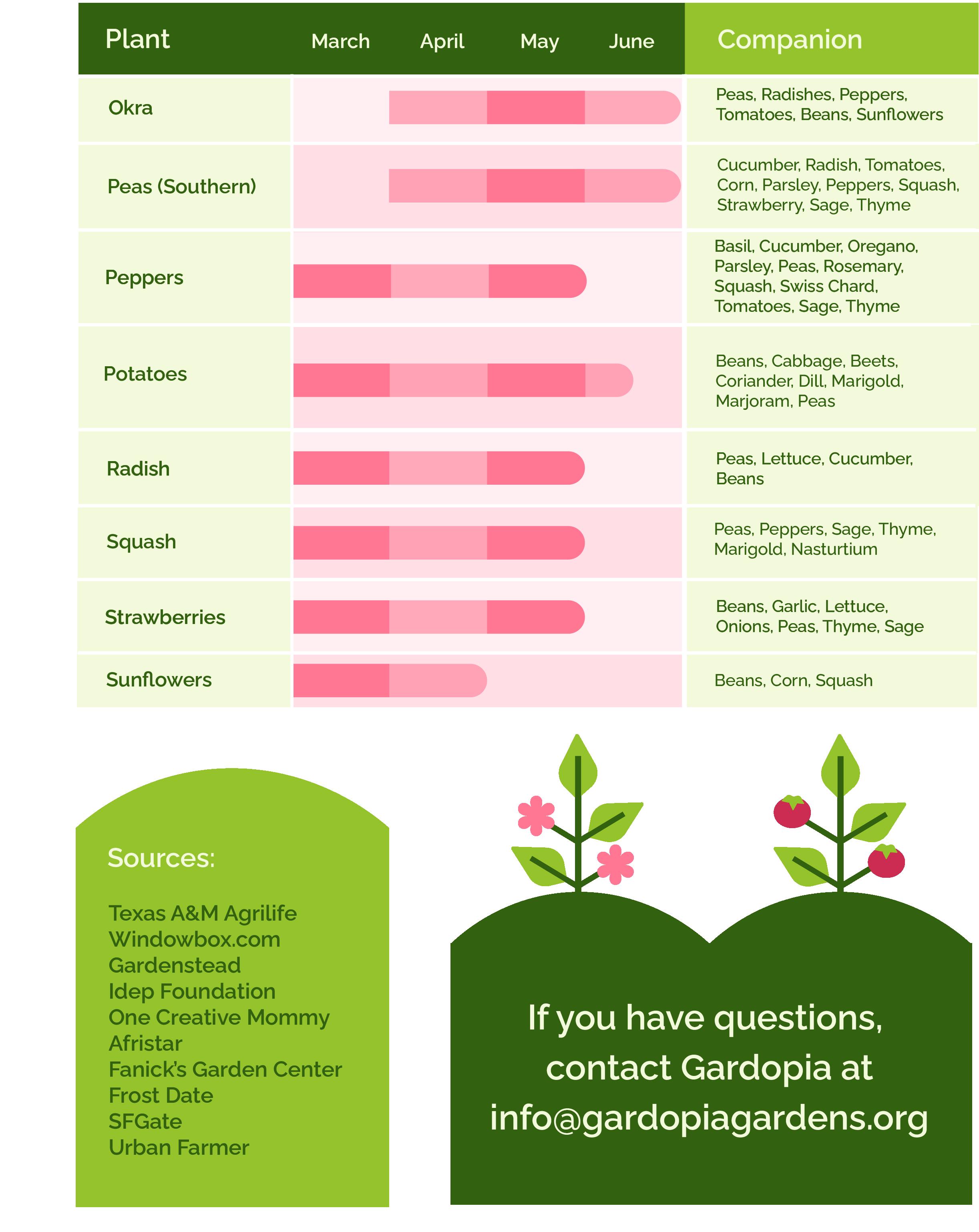
Spring is a wonderful time for gardening in Texas, as the warmer weather and longer days allow for a wide variety of plants to thrive. Whether you are a seasoned gardener or a beginner, there are many tips and tricks to keep in mind when planning and executing your garden this spring.
According to a study published in the Journal of Extension, “Spring gardening in Texas can be challenging due to the extreme weather conditions



choose plants that are more likely to thrive and produce a successful crop.
Another important factor to consider when planning your spring garden in Texas is soil preparation. As the Texas A&M AgriLife Extension notes, “Good soil preparation is the foundation of a successful garden. This involves testing the pH level of your soil, adding organic matter, and cultivating the soil to a depth of at least 6 inches.” By taking the time to properly prepare your soil, you can ensure that your plants have the nutrients they need to grow strong and healthy.
When it comes to planting, timing is key. As noted by the Texas A&M AgriLife Extension, “Planting dates for
that can occur. In order to succeed, it is important to choose the right plants for your specific climate and soil type.” This means that before you start planting, it is essential to research the different plant varieties that are best suited for your particular area of Texas. This will help you to
vegetables and fruits vary depending on the region of Texas you are in. It is important to consult a local planting guide to determine the best time to plant specific crops.” By planting at the right time, you can give your plants the best chance of thriving and producing a successful harvest.

In addition to choosing the right plants, preparing your soil, and planting at the right time, it is also important to maintain your garden throughout the growing season. As noted by the Texas A&M AgriLife Extension, “Regular watering, fertilization, and pest control are essential for a healthy garden.” By taking the time to care for your plants properly, you can ensure that they continue to grow and produce throughout the season.

In conclusion, spring gardening
in Texas can be a rewarding and enjoyable experience, but it does require careful planning and attention to detail. By following the advice of experts and taking the time to research, prepare, and maintain your garden, you can create a thriving and productive outdoor space that will bring joy and beauty to your home for many seasons to come. As the poet William Blake once said, “To see a World in a Grain of Sand, And a Heaven in a Wild Flower, Hold Infinity in the palm of your hand, And Eternity in an hour.” May your spring garden in Texas be a reflection of the beauty and wonder of the natural world.
Watermelons are a popular summer fruit loved by many due to their juicy and refreshing taste. Growing watermelons can be a rewarding experience, but it can also be challenging if not done properly. Want to give it a try? Then check out these tips for a growing successful crop.
The first step in growing watermelons is to start with good quality seeds. As noted by the University of Georgia Cooperative Extension, “Seed quality is very important in obtaining a good stand of watermelons.” (Strang et al., 2014). Look for seeds that are labeled as disease-resistant and have high germination rates.
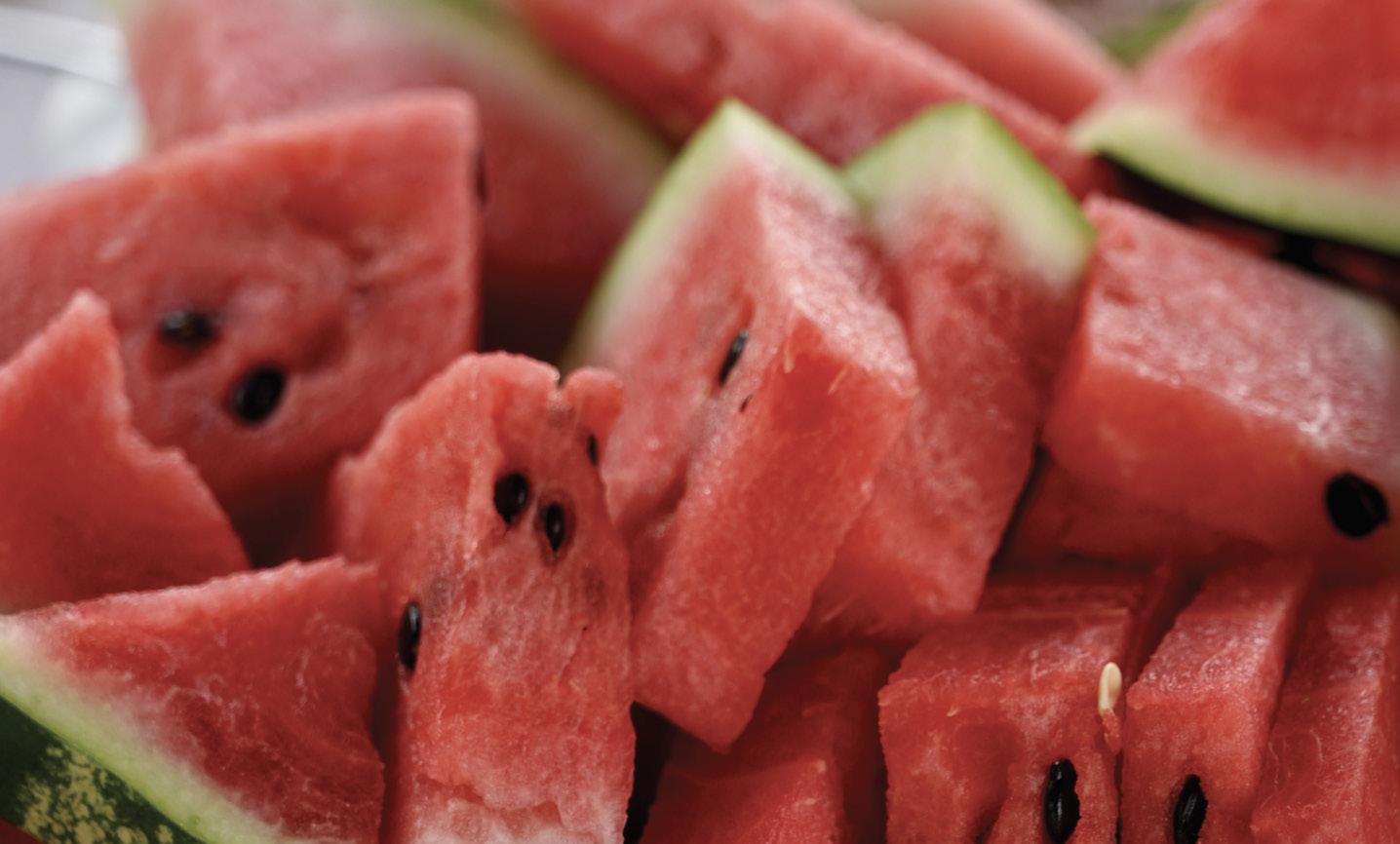
Watermelons require a lot of sunlight and warm temperatures to grow properly. According to the North Carolina State University Extension, “Choose a site that receives full sun all day and has well-drained soil.” (McGinnis, 2020). Watermelons also need good air circulation to prevent fungal diseases.
Before planting watermelons, it is important to prepare the soil properly. As noted by the University of Tennessee Extension, “Prepare the soil by incorporating organic matter such as
compost or well-rotted manure.” (Miles et al., 2021). Watermelons prefer a slightly acidic soil with a pH between 6.0 and 6.8.
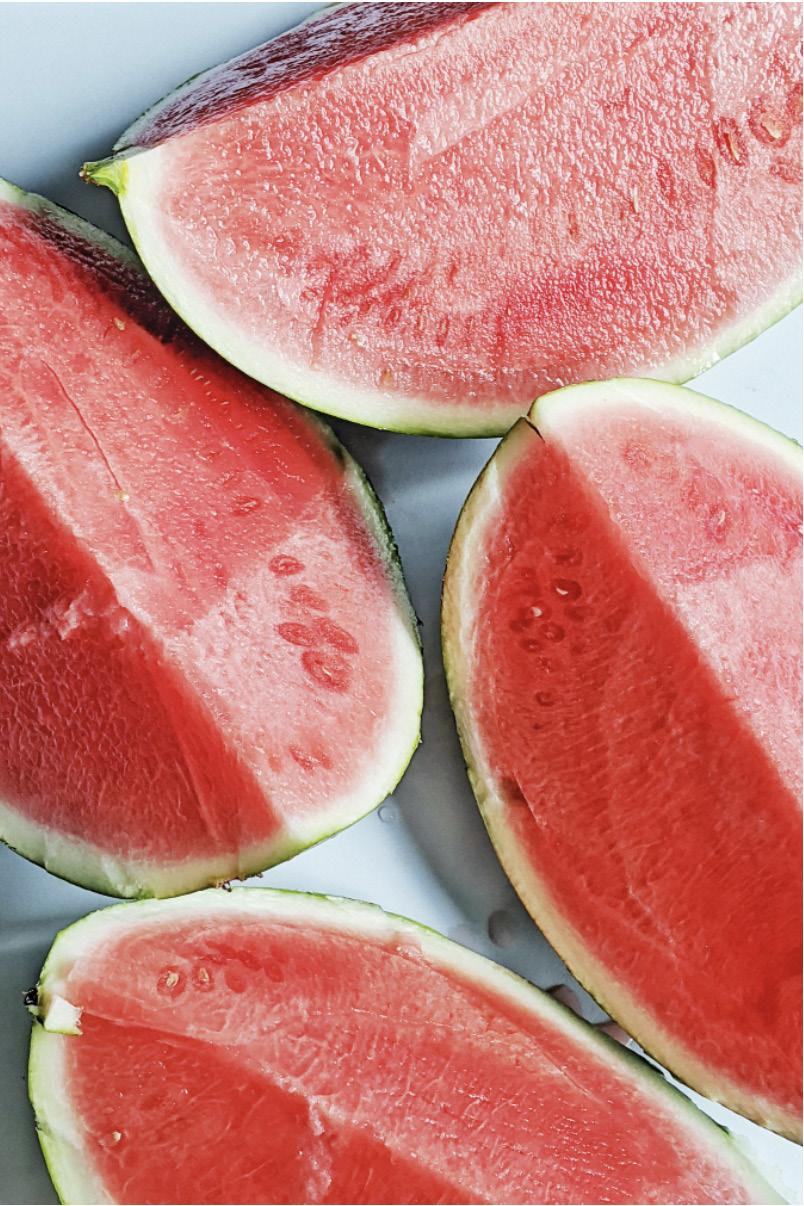

Watermelons require a lot of water to grow properly. As noted by the University of California Agriculture and Natural Resources, “Watermelons need about 1 to 2 inches of water per week, especially during the flowering and fruiting stages.” (Cahn et al., 2019). However, overwatering can also be a problem, so it is important to monitor the soil moisture level.
Watermelons are susceptible to a variety of pests and diseases, including aphids, whiteflies, and powdery mildew. As noted by the Texas A&M AgriLife Extension, “Prevention is key to controlling pests and diseases, including selecting disease-resistant varieties, controlling weeds, and using insecticides and fungicides when necessary.” (Edwards, 2019).
In conclusion, growing watermelons can be a fun and rewarding experience, but it requires proper planning and care. By starting with good quality seeds, choosing the right location, preparing the soil properly, providing adequate water, and controlling pests and diseases, you can increase your chances of growing healthy and delicious watermelons.


Have you ever heard of an urban Aggie? I know, I know, it’s not a common term, but believe it or not, urban agriculture is currently experiencing a renaissance around the nation, and San Antonio isn’t missing out on the fun. Officially, urban agriculture is the same as rural agriculture, with one caveat, it happens in the city; usually on small plots that are privately or publicly owned. People grow food, raise animals, create compost, and even hold markets in these green oasis’ amongst the concrete jungle. While it wasn’t that long ago that the majority of society was involved in food production in some form or fashion, after WWII there has been a slow and steady decline in city slickers knowing how the fruits, vegetables, meats, grains, nuts, and more get onto their plate. With that decline, simultaneously an incline in unhealthy lifestyles and environmental degradation sprouted.
Currently, the public health and climate crises we are experiencing as a population are two of the biggest challenges we may face this century. While it may be overwhelming to think about at a global scale, there is hope, and it starts with cultivating the soil at a local sphere. From backyard gardens to local farms, community gardens to school gardens, these spaces are havens and strongholds for bringing people together, teaching healthy living, creating economic growth, addressing food insecurity, restoring ecosystems, and you might even get a carrot or two!
Let’s start with the storied backyard garden. Maybe you have a raised bed or some small container planters, this approach has a relatively low access point, and can provide fresh produce

year round. There is no data for the San Antonio region on how many home gardeners or farmers there are in the region, but it’s safe to say quite a few folks are avid growers, and produce a tomato or two! During the pandemic there was a wave in home gardeners due to the shutdown and people spending more time in their residences. Some local companies popped up or expanded, such as The Landscape Cooperative, Two Hoes Gardening, Uprooted Gardens, South Eden Food Forest, Grow Food SA, and more. The rise of these companies starts to validate the industry, and niche landscaping that can provide functional and beautification that creates food security at the individual and familial level.
The installation of these gardens can be as simple or complex as you’d like. Whether you go the DIY route, or hire a professional, the sky’s the limit in regards to how much food you can grow with an efficient system. There’s examples of homesteaders who produce a significant amount of food for themselves. In theory, a family can produce between 10% - 50% of their daily calories by growing food at home using yards for food instead of lawn. The most recent example of this was during WWII when Victory Gardens produced millions of pounds of food for the US Population while we rationed for the troops overseas.


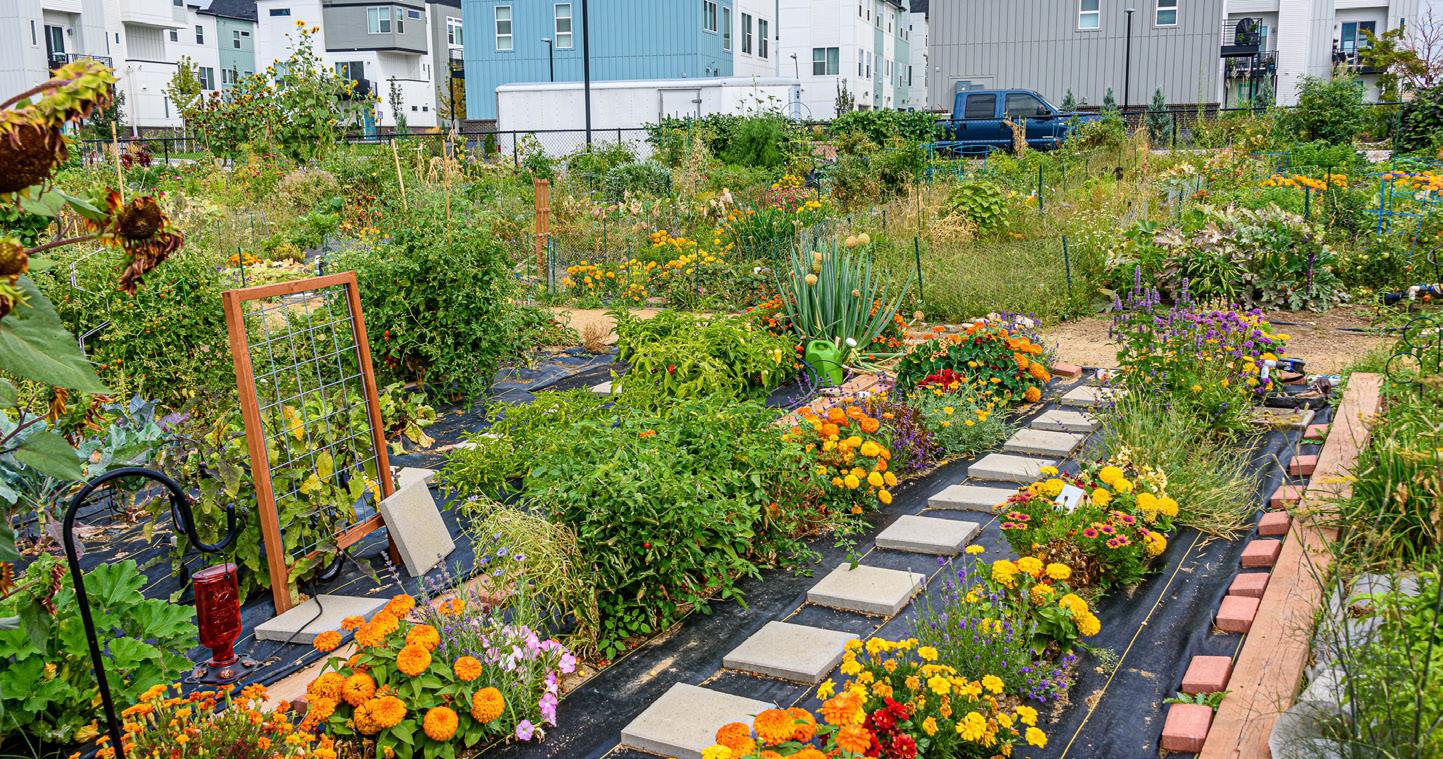
A step up from the home garden is the local farm! For another percentage of your calories there’s nothing better than knowing exactly who’s growing your food. While there aren’t a ton of local farms in San Antonio proper, there are a few, and just outside the city / county more and more are popping up! You can usually find these farmers at the farmers market on the weekends or throughout the week. Talking Tree, Green Bexar, Granierri Family, 9-1 Produce, Local Sprout, Pristine Produce, and Produce to the People are a few of the privately owned operations that are meeting the growing demand for local food. We also have organizations like the San Antonio Food Bank and San Antonio College - EcoCentro that have farms as part of their operations as well! Something super exciting is the new Texas A&M Agrilife Greenies Urban Farm that will be a state-of-theart facility, and really uplifting SA as a leader for decades to come in urban ag! It will be approximately 10 acres, host the extension agent offices, and have community meeting space! There’s also an extremely large indoor farm that is sprouting at Brooks City Base called Soli Organic. It’ll be about 100,000 square feet, and produce
fresh fruits and vegetables year round. Operations like these are critical to protecting local food security and building a robust food system that can overcome supply chain disruptions at a national and global level. By incentivizing local food production we can spur more small farmers between 1-100 acres, and continue increasing food sovereignty for the region.
But, how do we ensure there are future agriculturalists for these local farms when the average age of a farmer is nearly 62 years old? Well, school gardens are on the rise, and a great way to train the next generation of agriculturalists. During WWI the US Govt had a huge campaign for what they called the “School Garden Army” through the Department of Education. Now, 100 years later
there is something called Farm to School through the USDA, which also provides support for edible gardens at schools; Currently there is a USDA Farm to School awardee at the SAISD YWLA: Primary. Additionally, there are organizations like the City of San Antonio, National Wildlife Federation, Big Green, and the Whole Kids Foundation that fund these initiatives as well! Almost any school you go to has a raised bed or two. These gardens are used for project-based learning in almost any academic discipline. In addition to the knowledge and skills gained, these gardens are also good for social-emotional learning, and providing an outlet for students who may be having a hard time in the classroom. Regardless of the use of these living laboratories, school gardens are a great addition to any schoolyard, teaching sustainability, healthy living, kindness, and community building.
Speaking of community building, Community Gardens have been around since at least the 1890’s in America according to the Smithsonian Institute. These communally operated plots can be found all throughout the Alamo City! In 2008 Green Spaces Alliance (Bexar Land Trust) founded a Community Garden Network that peaked in the mid 2010’s with ~50 active gardens. Now, in the 20’s there’s still a robust group of gardens, many times located in parks or previously vacant lots. Usually there is a lead garden steward that you can connect with to adopt-a-plot or join a volunteer day. Some successful community gardens include Alamo Heights, Mahncke Park, Beacon Hill, High Country, and River Road. That being said, there are many communities who do not have this amazing resource, and it’s critical that the city, county, private businesses, and foundations help provide the resources to increase equity amongst the city. For folks who don’t have kids at a school, live in apartments, and don’t have community centers, these community gardens can
help reconnect citizens to food and nature. Many community gardens have fruit trees, raised beds, pollinator gardens, outdoor kitchens, and covered teaching spaces. Whether it’s considered an amenity or critical infrastructure, there’s enough land in San Antonio to integrate this into the fabric of every neighborhood.
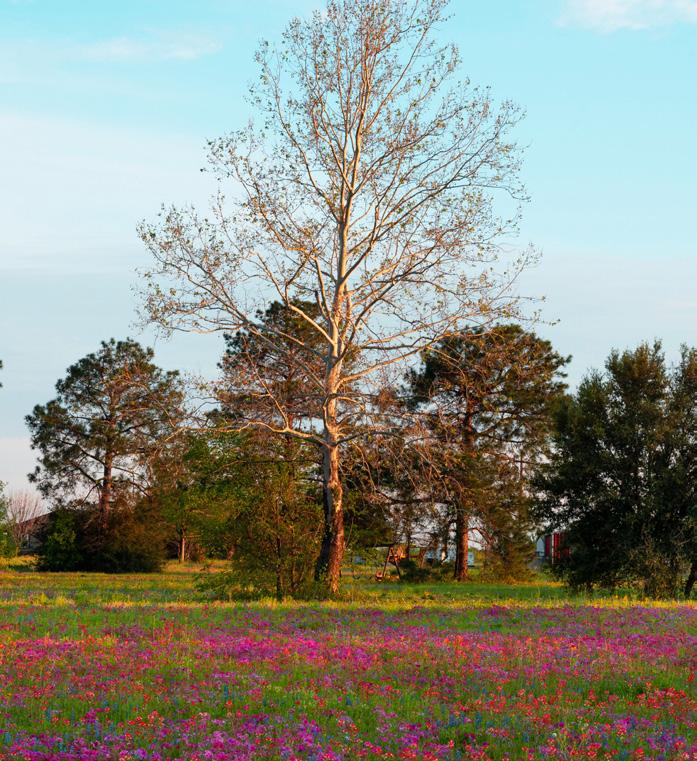
One last type of urban ag that is emerging in SA is the planting of perennials like fruit trees and berries, in addition to foraging for mushrooms, “edible weeds”, and other wild flora / fauna. This way of life was the norm pre-agriculture, and there’s evidence that the indigenous people of the Americas planted edible plants as forests for centuries. As they say, history repeats itself, and that cycle is on an upswing again. The Food Policy Council recently helped found the Tamox Talom Food Forest at Padre Park, and the Central Texas Mycological Society routinely hosts mushroom walks at local wooded areas. This spring you might find a mulberry tree or blackberry thicket randomly producing, and hopefully this fall we’ll have a successful pecan harvest! These low maintenance food production options are a great approach to resilience, and can also assist with the heat island effect. Very soon Stanford University will be releasing a Natural Capital Report to further detail the ecosystem services of more passive

With capstones like The Greenies, YWLA Primary Farm to School, and Tamox Talom Food Forest, San Antonio has the potential to become the urban ag capital of the nation. While state and privately funded projects are in the works, the city should also fund strategies listed in three of their comprehensive plans. SATomorrow (2040 Plan), the CAAP (Sustainability), and SA Forward (Metro Health) outline 6-9 strategies that can help protect local food security. (Show image) By producing food, we can improve the health of the people and the planet, create jobs, stimulate the local economy, educate, and build community connections. In this digital age we cannot forget our roots. I encourage each and every one of you to re-plant literal and metaphorical seeds for our city.
City of San Antonio
SA Climate Ready & SA Tomorrow
SA Climate Ready Protect Local Food Security - Pg 48
35 STATE OF THE FOOD SYSTEM: Fund and hire a Food Policy Coordinator to develop a State of the Food System Report to understand extent to which food supply chain is resilient (SA Tomorrow FS5 FS6)
36 PURSUE URBAN AGRICULTURE OPPORTUNITIES: Assess pilot urban agriculture projects, such as Mission San Juan Capistrano, for potential dup ication on other properties and incentivize and provide resources to facilitate urban agricultural uses on vacant or underutilized land, including City-owned and other public land (SA Tomorrow, FS8)
37 URBAN AGRICULTURE TRAINING PROGRAM: Develop an urban agriculture training program to train new urban farmers in climate-resilient agriculture and business practices (including low-carbon food production and processing) (SA Tomorrow FS9)
34 LOCAL CROP DIVERSIFICATION: Work with agriculture experts to identify and test more drought- and pest-resistant crop options for local food production in San Antonio and support wildlife that provides ecosystem services that enhance agriculture production
40 SUPPORT AND ENHANCE COMMUNITY GARDEN NETWORK: Provide resources to ensure the viability of neighborhood-based gardens that contribute to local food production and beneficial pollinator habitat

39 INCENTIVIZE LOCAL FOOD PRODUCTION: Increase local food production through various incentive programs, e g through provision of rebates for the purchasing of equipment to enable precision farming/machine harvesting resilient to extreme weather conditions rebates for residential chicken keeping etc
38 CONTROLLED-ENVIRONMENT AGRICULTURE: Consider opportunities for controlled-environment agriculture (hydroponics, aquaculture, etc ) to increase local production of food that is less energy and water intensive and protected from climate extremes
SA Tomorrow Food System
FS5 Develop a State of the Food System Report: This assessment will look at the San Antonio Region’s food system the city’s integrated network that includes the production processing distribution consumption and waste management of food The report will identify challenges and opportunities and provide a plan to improve local food security and the local food economy
FS8 Pilot a program that includes incentives and resources to facilitate urban agricultural uses on vacant or underutilized land: The barriers to allowing vacant land to be used for community gardens and urban agriculture were amended in the Unified Development Code in January 2016 This strategy focuses on promoting the use of underutilized land to qualified farmers and gardeners to support the local economy, improve food access and security, and assist with carbon sequestration
FS9 Develop an urban agriculture training program to train new urban farmers in agriculture and business practices (including food production and processing): The strategy will grow the number of urban farmers and provide them with the necessary skills to ensure the growth of the local food economy
FS1 Enhance and expand existing farm to school programs and initiatives: This strategy will help leverage existing efforts to encourage and promote the purchase of locally produced food in schools strengthen the local agricultural economy and offer educational opportunities to improve child nutrition and health Enhancing and expanding these programs will increase the number of schools and the range of fresh food that is made available
FS2 Educate and enhance opportunities for low-income residents to participate in assistance programs to purchase healthy food from local farmers markets: Educate and enhance opportunities for low-income residents to participate in assistance programs to purchase healthy food from local farmers markets
FS3 Implement a Healthy Corner Store Initiative in targeted neighborhoods to support the selling of healthy, nutritious food in local corner and convenience stores: This strategy will engage and support convenience store owners and small markets to expand their healthy and fresh food options and offer them at affordable prices
FS4 Introduce fresh food circulators and mobile vendors in neighborhoods with limited access to fresh foods: This strategy will help increase access to affordable healthy food in neighborhoods underserved by supermarkets by introducing vendors that will provide healthy food through food trucks or deliver directly to homes
FS6 Fund and hire a Food Policy Coordinator: The City of San Antonio and local partners will hire a Food Policy Coordinator who will be responsible for implementing the food related strategies in this plan, as well as leading the effort to develop the State of the Food System report
FS7 Expand the number and frequency of farmers markets throughout San Antonio: San Antonio currently has 33 active farmers markets This strategy would increase that number and the frequency of their operation with a particular focus on areas identified as low-income food deserts
Rosemary is native to the Mediterranean coastal area. It is believed to have been first used by the Greeks and Romans. It later spread south to Egypt and west to the rest of Europe. We know it reached Spain by the 13th century. It was also used throughout Europe as a medicine during the Bubonic Plague.
Rosemary is said to boost the production of red blood cells, perhaps helping prevent bacteria infections. It can also be used as a home remedy for upset stomachs.

Use a very well drained soil. Rosemary is a hearty plant, but is especially susceptible to root rot if overwatered.

Ingredients
1 Pound red potatoes
2+ tbsp of rosemary
Olive oil and seasonings to taste
Preheat the oven to 450 degrees F, dice the potatoes and cover with olive oil and seasonings, roast for 30-40 minutes.
You can garnish with additional rosemary once done as well.
Rosemary is mentioned in 5 of Shakespeare’s plays.
Eggplants originated near China and India. The Spanish Moors brought the crop to Europe and explorers then brought it to the New World in the 15th century. There are now many different varieties of eggplants after these centuries of cultivation, including: Indian, Italian, and Japanese eggplants.
Eggplants contain vitamins A and Cand are high in polyphenols, which may help cells do a better job of processing sugar if you have diabetes.
Plant seeds 2-3 feet apart and keep the soil moist. You can add a small bit of compost to better the soil. You may also add much to the top layer of the soil after the plants have grown about 6 inches.
Ingredients
1 Large eggplant
1 Tbsp soy sauce or fish sauce
1 package of seaweed
1/4 cup flour
1/2 cup milk of choice
1 cup breadcrumbs
Oil for frying & seasonings to taste
Peel eggplant, cut into thick slices, and remove the centers so they form a donut shape.
Bring a pot of water to boil and add the soy or fish sauce and the package of seaweed.
Once boiling add the eggplant and cook for 10 minutes.
Once done, drain and dry on paper towels and start heating a pan with oil.
Mix the flour and milk together. Dip eggplant pieces into this batter mix and then into the breadcrumbs. Then fry in a pan until crispy.
Americans were initially weary of eggplants since they belong to the deadly Nightshade family.

The average American consumes about eight pounds of fresh grapes each year.

It seems humans have been eating grapes since the beginning of our existence. There is also evidence of grapes being used to make drinks with the earliest records appearing in China in 7000 BCE. There is evidence of grape domestication in the country of Georgia dating back to 6000 BCE and in Greece in 4500-4000 BCE. Grapes and wine largely spread due to its association with religion, primarily Christian monasteries.
Grapes are a good source of vitamins C and K; they also contain protein, carbohydrates, and dietary fiber.
Growing Tip
When watering grape plants make sure you only water the root and avoid getting the leaves wet. This will help prevent disease and rot. Grape vines also need lots of space; 6 feet is the recommendation per vine.
Ingredients
1-2 Lbs of grapes
1/2 cup water
Sugar to taste (Recommend 1/4 cup) (Can substitute honey as sweetener)
Combine ingredients into a blender and serve chilled.
Feel free to drain out pulp if desired.
Cucumbers have been grown for over 3000 years, starting in Western Asia. Empires in China and India cultivated this vegetable and it eventually spread to the civilizations of Egypt, Rome, and Greece. King Charlamagne grew cucumbers in Italy in the 8th century. Cucumbers then spread further West. We first hear about cucumbers in France in the 9th century and in England with King Henry VIII in the 14th century. Christopher Colombus is credited with bringing cucumbers across the Atlantic with the first records of the crop in Haiti in 1494. By the early 1800s cucumbers were common in colonial gardens in mainland North America.
While cucumbers are 95% water, they also contain Vitamins A and K.
Cucumbers grow best at 75-85 degrees. It is best to plant them at the end of March or in April. Plant seeds about ½ inch deep in well drained soil. You should see them sprout in about 7-10 days. The use of a trellis to support their growth is recommended.
Cucumbers

Tomatoes
Red Onion
Vinegar
Salt & Pepper
Cut and peel cucumbers, tomatoes, and red onion.
Combine together and feel free to use any ratio of these three vegetables depending on what you prefer.
Add vinegar, salt and pepper to taste. Or, instead, feel free to top with a salad dressing you like! (I recommend a spicy italian dressing.)
Cucumbers can be used as a lubricant for squeaky hinges!
In recent years, there has been a growing interest in plant-based diets due to concerns about health, sustainability, and animal welfare. A plant-based diet is defined as a diet that emphasizes the consumption of whole plant foods such as fruits, vegetables, legumes, whole grains, nuts, and seeds while limiting or eliminating animal products. Here are some of the benefits of a plant-based diet.
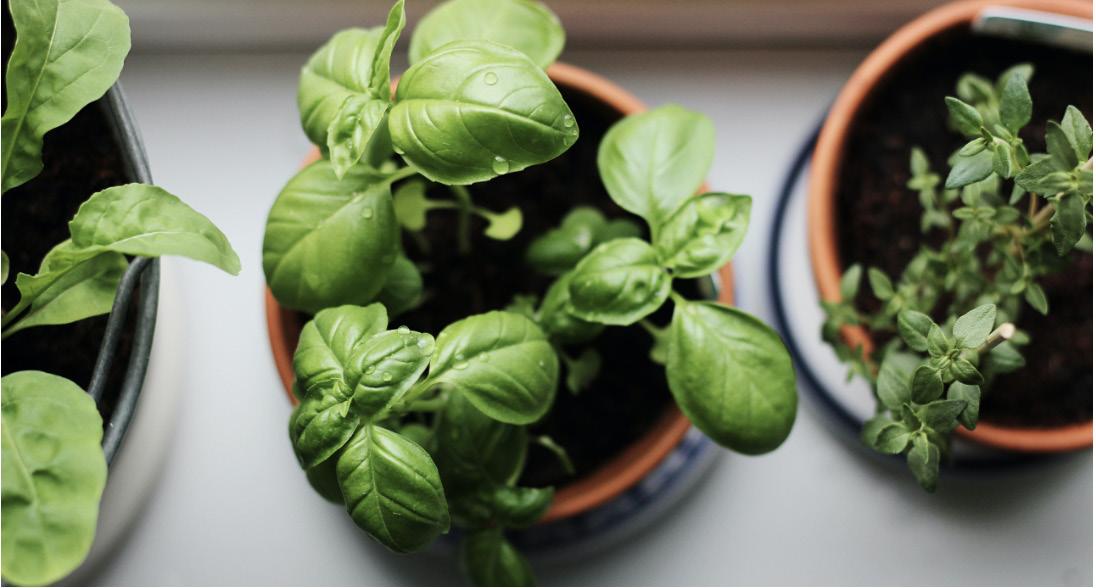
One of the most significant benefits of a plant-based diet is improved cardiovascular health. According to a study published in the Journal of the American College of Cardiology, “Vegetarian diets are associated with lower blood pressure, lower levels of LDL cholesterol, and a reduced risk of ischemic heart disease.”
Another study published in the Journal of the Academy of Nutrition and Dietetics found that “Vegetarian diets, particularly vegan diets, are associated with lower levels of total cholesterol, LDL cholesterol, and blood pressure.”
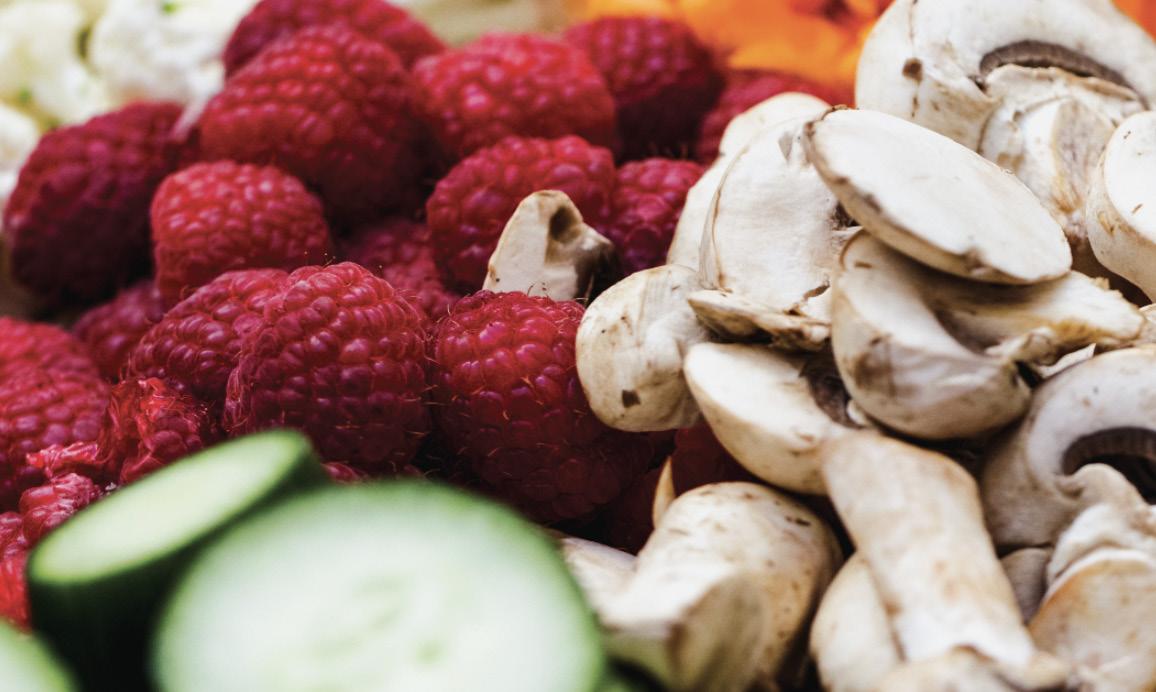
Plant-based diets have also been associated with a reduced risk of chronic diseases such as diabetes, cancer,
and Alzheimer’s disease. According to a study published in the journal Nutrients, “A plant-based diet has been associated with a reduced risk of developing type 2 diabetes, and a lower risk of cardiovascular disease, hypertension, and certain types of cancer.” Another study published in the Journal of Alzheimer’s Disease found that “Plant-based diets, especially those that are rich in fruits, vegetables, and nuts, may reduce the risk of Alzheimer’s disease and cognitive decline.”
Plant-based diets have also been shown to improve gut health by increasing the intake of fiber

and promoting the growth of beneficial gut bacteria. According to a study published in the Journal of Nutritional Science, “Plantbased diets are rich in dietary fiber, which has been shown to promote gut health by improving bowel function, reducing inflammation, and promoting the growth of beneficial gut bacteria.” Another study published in the journal Nutrients found that “A plantbased diet can positively impact gut microbiota composition, which may improve overall health.”

Another benefit of a plant-based diet is environmental sustainability. Animal agriculture is a significant contributor to greenhouse gas emissions, water pollution, and deforestation. According to a study published in the journal Science, “The food system is responsible for up to one-third of global greenhouse gas emissions, with animal agriculture being a major contributor.” Another study published in the journal Nature found that “A global shift towards
a plant-based diet is necessary to reduce the environmental impact of food production.”

A plant-based diet offers numerous health benefits, including improved cardiovascular health, reduced risk of chronic diseases, improved gut health, and environmental sustainability. As Dr. T. Colin Campbell, author of The China Study, said, “The closer we get to a plant-based diet, the healthier we become.”


